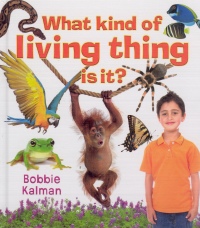| ________________
CM . . .
. Volume XVII Number 13. . . .November 26, 2010
excerpt:
These titles are the latest additions to the (now) 10-volume “Introducing Living Things” series designed for young readers. Each book is comprised of 10 chapters, a table of contents and a section called “words to know and index.” Only some of the words printed in boldface type in the text appear in this section, but all of the boldface words are defined within the main body of the text. (This begs the question, why have the “words to know” section at all?) A single paragraph appears on each page. Sentences are rather short and clipped and use plenty of repetition to help young readers to become familiar with the vocabulary. The author also poses questions to make readers review what they have read and to examine the illustrations for clues to the answers. Illustrations are bright and colourful and consist mainly of photographs, but there are a few diagrams as well. How Do Living Things Find Food? is somewhat of a misnomer as far as titles go. There is very basic information about the various groups of animals- herbivores (both grazers and browsers), carnivores, insectivores, and omnivores- as well as what they eat. The food chain and the role that scavengers play in nature are also covered. Finally, the food that humans eat is traced from its origins on the farm to the supermarket, but this information is very sketchy. Generally, the book explains what the different animal groups eat but does not really describe how the animals find food (which is implied by the title). The author could have discussed scent, colour and markings of flowers to attract pollinators, stalking, ambushing and various other techniques used to find food. Recommended with reservations. Gail Hamilton is a retired teacher-librarian in Winnipeg, MB. Copyright © the Manitoba Library Association. Reproduction for personal
use is permitted only if this copyright notice is maintained. Any
other reproduction is prohibited without permission.
NEXT REVIEW |
TABLE OF CONTENTS FOR THIS ISSUE
- November 26, 2010.
AUTHORS |
TITLES |
MEDIA REVIEWS |
PROFILES |
BACK ISSUES |
SEARCH |
CMARCHIVE |
HOME |

